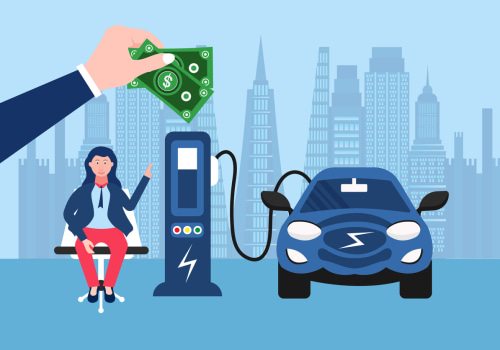In recent years, bike share programs have become increasingly popular as an eco-friendly alternative to traditional modes of transportation. From small-scale city programs to large-scale commercial initiatives, bike share programs are providing people with a convenient and cost-effective way to get around. But what exactly are commercial bike share programs? In this article, we'll explore the basics of these programs, how they work, and the benefits they provide.
The first thing to understand about commercial bike share programs
is the different types that are available. There are station-based bike share systems, dockless bike share systems, and hybrid systems.Station-based systems require users to pick up and drop off bikes at designated stations. Dockless systems allow users to pick up and drop off bikes anywhere within a designated area. Hybrid systems combine the features of both types. Next, we'll look at how these commercial bike share programs work. In general, users pay a fee to access the bikes for a certain amount of time.
They can then pick up a bike at a designated station or an unlocked dockless bike from an approved area. When they are done using the bike, they return it to a station or lock it in an approved area. Finally, let's look at the benefits of commercial bike share programs. These programs offer many advantages over traditional bike rental services. For one, they are often much more affordable than renting a bicycle for an extended period of time.
Additionally, they provide users with an easy and convenient way to get around without having to own a bike or worry about maintenance. They also help reduce traffic congestion and air pollution in cities, as more people opt to ride bikes instead of driving cars.
Benefits of Commercial Bike Share Programs
Commercial bike share programs offer a number of benefits to users, including affordability, convenience, and environmental friendliness. Firstly, commercial bike share programs are often significantly more affordable than owning a bicycle. For example, many programs offer a flat fee for unlimited rides, or offer discounted rates for frequent users.This makes it easy for people to get around without breaking their budget. In addition, bike share programs are convenient. They provide access to bicycles in designated areas, allowing users to quickly grab a bike and get where they need to go. This eliminates the need to worry about locking up a bike at their destination. Finally, bike share programs are beneficial for the environment. By reducing the need for personal vehicles, bike share programs can reduce carbon emissions and air pollution, helping to make cities cleaner and greener.
Additionally, since the bikes are shared rather than owned individually, there is less waste associated with bike manufacture and disposal.
Types of Commercial Bike Share Programs
Commercial bike share programs come in different forms. These include station-based, dockless, and hybrid systems.Station-based bike share programs
Station-based bike share programs are the most common type of commercial bike share program. They involve a network of bike docks located throughout a city or town.Riders can check out a bike from any station and return it to any other station. The stations are usually spaced close together, making it easy for riders to find a station near their destination.
Dockless bike share programs
Dockless bike share programs are similar to station-based programs, but without the need for docks. Instead, bikes are parked in designated areas and can be checked out using an app or other type of payment system.The bikes typically have built-in GPS tracking, allowing users to locate them easily. This type of bike share program is becoming increasingly popular in cities where traditional station-based systems may not be feasible.
Hybrid systems
Hybrid systems combine elements of both station-based and dockless bike share programs. These systems usually feature a network of docking stations with additional bikes available for check out via an app. This type of system provides riders with more flexibility while still providing some of the advantages of traditional station-based systems.How Commercial Bike Share Programs Work
Commercial bike share programs are designed to provide a convenient and economical way for people to get around without needing to own a bicycle.The way these programs work is fairly simple. To begin, users must pay a fee to join the program. This fee varies from city to city, but typically provides a certain number of trips or hours of access. After signing up, users can pick up a bike from any station in the network and ride it to their destination.
After they arrive at their destination, they can drop off the bike at any station in the network. The fees associated with commercial bike share programs usually include an annual membership fee, as well as additional fees for each ride taken. Some programs offer discounted rates for frequent users or special promotions for new members. In some cases, users may also be able to purchase a card that allows them to access the bike share system for a set period of time without needing to pay for each trip. Once the user has picked up their bike, they can begin riding it to their destination.
The bikes in the network are tracked via GPS and monitored by the bike share program. This means that users don't need to worry about returning the bike to the same station they picked it up from. Instead, they can simply drop it off at any station in the network. Overall, commercial bike share programs offer an easy and cost-effective way for people to get around without needing to own a bicycle. With an annual membership fee and additional fees for each ride taken, users can enjoy the convenience and freedom of getting around without needing to worry about finding a place to store their bike. Commercial bike share programs are becoming increasingly popular as an efficient, convenient, and affordable way to travel.
They offer a number of benefits, such as reducing traffic congestion and air pollution in cities. There are several types of commercial bike share programs available, all of which work in slightly different ways. Ultimately, these programs provide an easy and economical way to get around without needing to own a bicycle. Whether you’re a commuter or a weekend warrior, commercial bike share programs offer a unique and cost-effective way to get around your city. With the right program, you can get to your destination quickly, safely, and affordably.











Leave Message